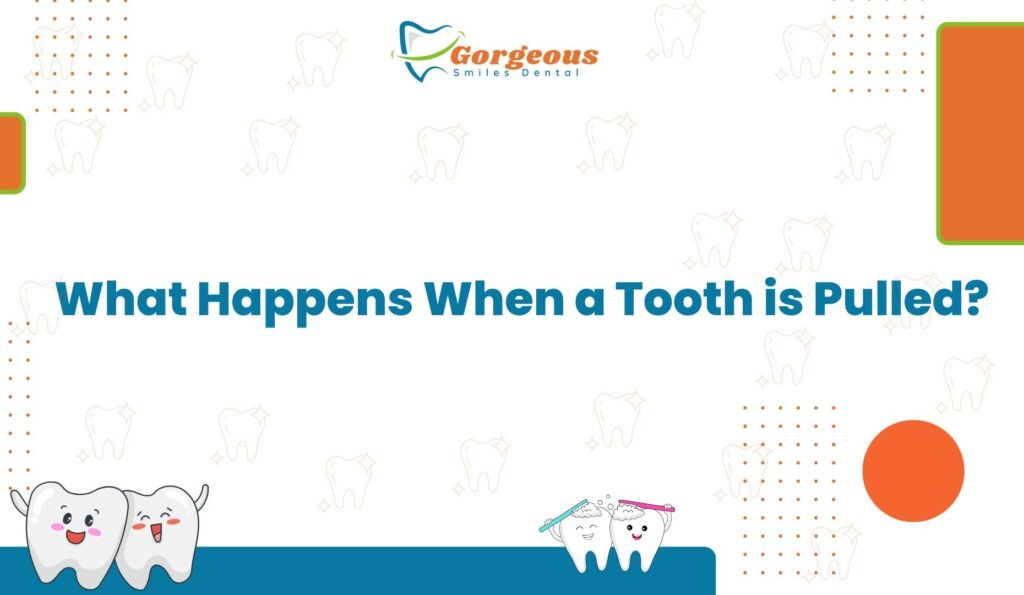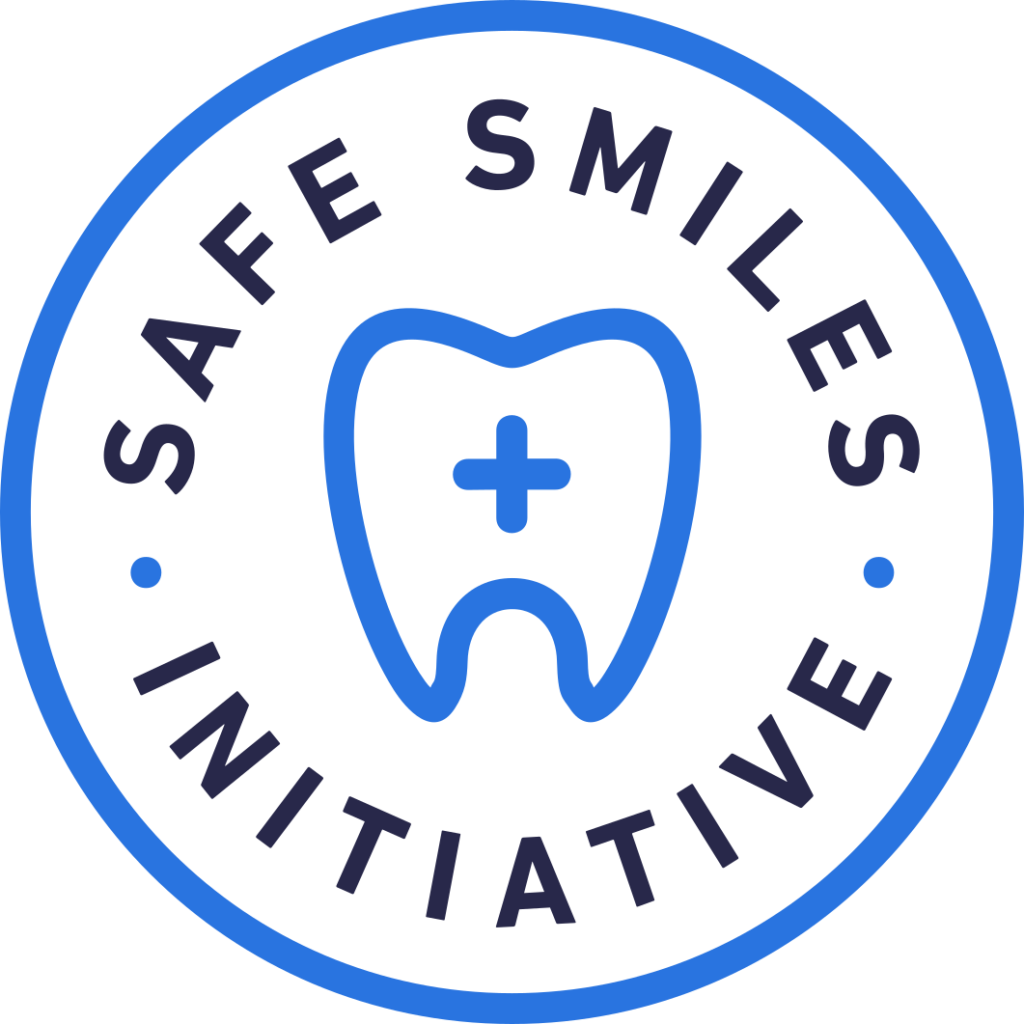What Happens When a Tooth is Pulled?

Tooth extraction is one of the most common dental procedures, yet it often raises anxiety and questions. Many people wonder what really happens during and after the process. Whether you need an extraction due to decay, infection, or impacted wisdom teeth, understanding each step helps ease your concerns and prepares you for recovery.
This guide explains what happens when a tooth is pulled, from the procedure itself to the healing process, along with aftercare tips to ensure smooth recovery.
Why Do Teeth Need to Be Pulled?
Dentists always aim to preserve natural teeth, but sometimes removal is the best option.
Common Reasons for Tooth Extraction
- Severe tooth decay or infection beyond repair.
- Advanced gum disease loosening the tooth.
- Impacted wisdom teeth causing pain or crowding.
- Orthodontic treatments requiring extra space.
- Damaged or broken teeth that cannot be restored.
In such cases, a tooth extraction prevents infection from spreading and helps maintain overall oral health.
What Happens During a Tooth Extraction Procedure?
The process of pulling a tooth involves careful steps to minimize pain and protect surrounding tissues.
Numbing the Area
Before starting, your dentist applies a local anesthetic to numb the tooth and gums. For surgical extractions, sedation or general anesthesia may be used.
Loosening the Tooth
Using special dental instruments, the dentist gently loosens the tooth from its socket by moving it back and forth.
Removing the Tooth
Once the tooth is loosened, it is carefully pulled out. For impacted teeth, the dentist may need to make a small incision or cut the tooth into smaller pieces for easier removal.
Closing the Site
A blood clot naturally forms in the empty socket. Sometimes stitches are used to promote healing and close the gum tissue.
How Painful Is a Tooth Being Pulled?
Many patients fear extractions because of pain. In reality, the procedure itself is not painful thanks to anesthesia. You may feel pressure as the tooth is moved, but sharp pain is rare.
After the anesthetic wears off, mild soreness or discomfort is normal. Over-the-counter pain relievers, prescribed medications, and ice packs are effective in managing recovery pain.
What Happens Immediately After a Tooth Is Pulled?
Once the tooth is removed, your dentist places gauze over the socket to control bleeding. A blood clot forms within the first 24 hours, protecting the exposed bone and nerves.
You’ll be advised to rest, avoid strenuous activity, and refrain from actions like drinking through a straw or smoking, which can dislodge the clot and cause dry socket.
Side Effects of Having a Tooth Removed
It’s normal to experience certain side effects after a tooth extraction.
Common Effects
- Swelling in the gums or cheeks.
- Minor bleeding for a few hours.
- Tenderness at the extraction site.
- Temporary difficulty in chewing or speaking.
These usually subside within a few days. Severe pain, fever, or excessive bleeding should be reported to your dentist immediately.
Is It Better to Pull or Fill a Tooth?
Patients often ask whether it’s better to save a tooth with a filling or remove it entirely.
In most cases, dentists recommend fillings, crowns, or root canals whenever possible because preserving natural teeth is best for oral health. Extraction is only advised when the tooth is beyond repair or risks spreading infection.
Eating After a Tooth Extraction
Yes, but you need to be careful. Stick to soft foods like yogurt, mashed potatoes, or soup during the first 24–48 hours. Avoid hot, spicy, crunchy, or acidic foods that may irritate the socket.
Drinking plenty of water helps flush bacteria, but avoid straws to prevent disturbing the blood clot.
How Long Does a Tooth Extraction Take?
The time required depends on the complexity.
- Simple extractions: 20–40 minutes for a single tooth.
- Surgical extractions (like impacted wisdom teeth): 45 minutes to over an hour.
Your dentist will provide an estimate before beginning, ensuring you know what to expect.
How to Sleep the First Night After Tooth Extraction
Sleeping after an extraction requires some adjustments.
- Keep your head elevated with pillows to reduce swelling.
- Avoid sleeping flat, as it may increase bleeding.
- Do not sleep on the side of the extraction.
- Change the gauze before resting if bleeding continues.
Proper rest aids healing and reduces the risk of complications.
Can I Brush My Teeth After a Tooth Extraction?
Oral hygiene is important but must be handled with care.
- Do not brush directly on the extraction site for the first 24 hours.
- Continue brushing the rest of your teeth gently.
- After 24 hours, rinse gently with warm salt water.
- Resume normal brushing after a couple of days as healing improves.
Long-Term Healing After a Tooth Is Pulled
Recovery takes place in stages:
- First 24 hours: Blood clot formation.
- Day 2–3: Peak swelling and soreness.
- 1 week: Gum tissue begins closing.
- 2 weeks: Most soft tissue healed.
- Several months: Bone beneath the gum fully heals.
Replacing the missing tooth with implants, bridges, or dentures may be recommended to maintain chewing function and prevent shifting teeth.
Conclusion
A tooth extraction is a straightforward procedure that helps protect your oral health when a tooth cannot be saved. By understanding what happens when a tooth is pulled, following recovery instructions, and caring for the extraction site properly, you can ensure fast healing and prevent complications.
For personalized treatment and aftercare, consult an experienced Dentist in Worcester, MA to make your recovery smooth and safe.
FAQs
What happens when an adult tooth is pulled out?
The tooth is removed from its socket, a blood clot forms to protect the site, and healing begins within days.
How painful is a tooth being pulled?
The procedure is not painful due to anesthesia, though mild soreness afterward is common and manageable with medications.
What are the side effects of having a tooth removed?
Swelling, bleeding, and tenderness are normal, but serious side effects like infection require immediate dental care.
What happens if you just pull a tooth?
Pulling a tooth yourself is dangerous and can cause infection, excessive bleeding, and long-term oral damage. Always see a dentist.
Is it better to have a tooth pulled or filled?
Whenever possible, it’s better to restore a tooth with fillings or crowns. Extraction is only a last resort.
Can I eat after a tooth extraction?
Yes, but stick to soft foods for the first 24–48 hours and avoid straws, hard, or spicy foods.
How long does a tooth extraction take?
Simple extractions take about 20–40 minutes, while surgical extractions may take longer depending on complexity.
How to sleep first night after tooth extraction?
Keep your head elevated, avoid lying flat, and use fresh gauze if bleeding continues before resting.
Can I brush my teeth after tooth extraction?
Brush the rest of your teeth normally but avoid the extraction site for at least 24 hours, then rinse gently with salt water.
Ready to book an appointment?
Book a consultation today or make an appointment using our convenient online appointment scheduler.

We’re committed to your safety.
Enjoy the flexibility of paying through monthly payments.

A discount plan available to keep you and your family healthy.
Others Article
At our dental practice, we prioritize compassion and empathy toward our patients. Please read our blog and articles for tips on maintaining oral health and learn more about our commitment to providing exceptional dental care with a personal touch.
